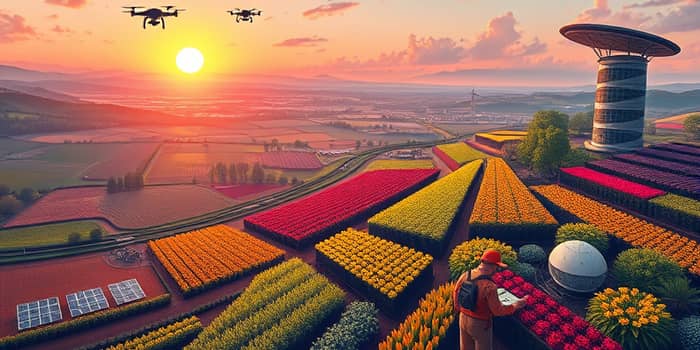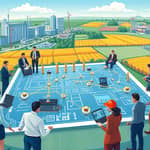
The global food system stands at a crossroads, driven by technological breakthroughs, climate realities, and evolving consumer demands. This article unpacks the forces shaping agriculture and nutrition over the next decade, offering actionable insights and inspiration.
Agriculture’s renaissance is powered by innovation. From the smallest family farm to large agroenterprises, technology is the catalyst for change.
At the heart of this shift lies real-time crop monitoring, where sensors deliver minute-by-minute data on soil moisture, temperature, and plant health. Complementing this, predictive analytics and insights enable farmers to forecast yields and optimize inputs like water and fertilizer.
By 2025, over 60% of U.S. farms will adopt precision tools, while sustainable land management is set to grow by 25% between 2020 and 2025. These advances underscore how integrated digital tools are elevating productivity and resilience.
Climate change presents both a challenge and an opportunity for agriculture. As weather patterns shift, so too must farming practices.
Regenerative approaches are gaining traction, rebuilding soil health and sequestering carbon. Simultaneously, urban and vertical farms are sprouting in city centers, reducing transport emissions and delivering fresh produce year-round.
Despite these gains, climate extremes have depressed yields in many lower-latitude regions, while higher latitudes have seen modest gains. Balancing these dynamics requires coordinated policy, research, and investment.
Consumer tastes are shifting toward healthful and sustainable choices. Alternative proteins—from plant-based burgers to lab-grown meat—are disrupting traditional markets, attracting billions in venture capital.
Emergent technologies, such as 3D food printing and functional ingredient encapsulation, promise to deliver tailored nutrition, longer shelf life, and robust supply chains. These advances address disparities in access and raise the bar for food safety.
As demand grows for locally sourced and ultra-traceable products, producers are forging direct-to-consumer models, enhancing equitable food access and building trust through transparency.
The economic landscape of agriculture is marked by contrasts. Crop sectors like nuts and wine grapes face headwinds, while livestock producers—particularly beef farmers—report strong profitability.
Persistent macroeconomic pressures, including persistent inflationary pressures and high operational costs, are squeezing margins. Yet, optimistic sentiment among farmers remains high, with crop prices up 9% for corn and 5% for soybeans in key regions early in 2025.
Government policies and private investors are channeling capital into agile AgroTech startups and established firms, aligning with United Nations Sustainable Development Goals. This influx strengthens innovation pipelines and de-risks large-scale climate interventions.
Feeding nearly 10 billion people by 2050 requires transformative change across public, private, and civil sectors. Resource constraints—land, water, and energy—demand that we do more with less through efficiency and circularity.
Cross-sector partnerships are emerging as a linchpin for progress. Universities, NGOs, and corporations are pooling expertise to advance gene-edited crops, soil carbon markets, and water-saving irrigation systems.
Nutrition security goes beyond calories. It encompasses stability, utilization, and affordability, ensuring that populations not only have enough to eat, but access food that sustains health and productivity.
Policy makers must incentivize sustainable practices through targeted subsidies and robust regulatory frameworks. Farmers need access to credit and training to adopt cutting-edge technologies effectively.
Investors play a crucial role by backing scalable solutions that integrate environmental and social metrics. Consumer education campaigns can accelerate the adoption of novel foods and reduce waste.
Above all, the journey to a resilient food future hinges on a shared vision: balancing productivity with planet health and human well-being. By harnessing innovation, fostering collaboration, and prioritizing equity, we can cultivate a food system that nourishes all.
Future of Food: a shared endeavor where technology, sustainability, and compassion converge to feed the world.
References













